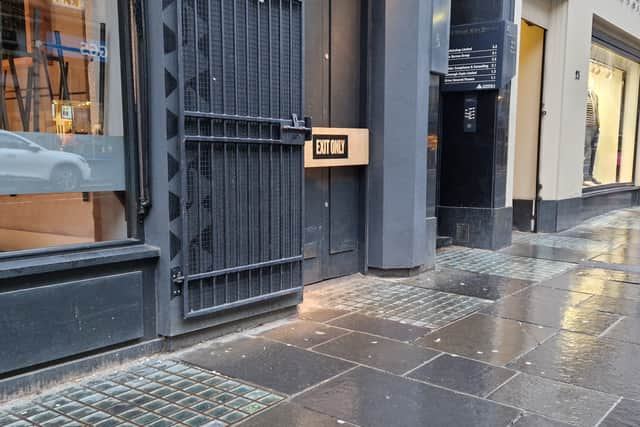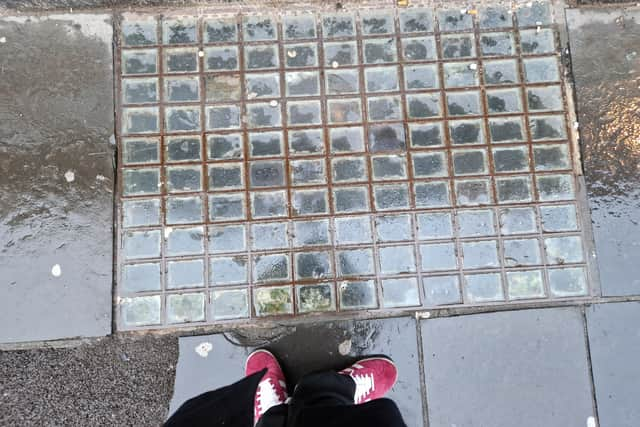The reason why Glasgow city centre streets have 'skylights' in the pavement: Pavement Lights in Glasgow explained
and live on Freeview channel 276
Glasgow has many strange little artefacts that puzzle modern Glaswegians - from bricked up tenement windows to long-disused public toilets - what we wanted to talk about today are these curious little 'pavement lights' you can find around the city centre.
These square little skylights can seem more than a little bizarre - and really set the mind racing: what is down there? The old Victorian streets of Glasgow? A secret underground land inhabited by mole-people? Perhaps even where they stick all the rubbish during the bin strikes.
Advertisement
Hide AdAdvertisement
Hide AdThe answer is not quite as far-fetched, but nonetheless pretty interesting. You can find these 'Pavement Lights', as they're called in the UK, all across streets in the city centre, like West Nile Street. Quite simply, they are there to let sunlight (what little there is in Glasgow) pour through into the space below. You might think those tiny little glass squares wouldn't let much light in, but you'd be wrong, they often used 'anidolic lighting prisms' which redirects the light to be fuller and fill the space sideways.


Pavement lights were first developed in the 19th century, as using gas lighting in confined cellars often filled with flammable objects / liquids is inadvisable - it was also pretty expensive in those days, so most of the pavement lights you see around Glasgow are at least a century old. They declined in use with the birth of inexpensive electric lighting after Thomas Edison came on to the scene and introduced commercial electric lighting solutions (lightbulbs) - which only became cheaper as Britain entered the 20th century.
It's not just because it was cheaper either - Victorians valued natural light over artificial light, so if the cellar was open to the public, it would be preferable for the space to be lit naturally rather than by gas lanterns or candles - an impressive feat since most Victorians didn't really know much about vitamin D.
Originally the colour of the glass would have been a neutral or clear colour - but now after over a century stuck in the pavement exposed to ultraviolet light they have turned a pleasant purple colour.


Advertisement
Hide AdAdvertisement
Hide AdGlasgow even helped produce the pavement lights used in cities across the UK - Glasgow-based glazier, William Maclean a wholesale glass merchant on St Vincent Street, became the Scottish agent for Haywards Ltd Extone - who were the company producing patented pavement lights that used prisms that could 'bend' light coming through the skylights at a 90 degree angle. The iron-founders used to provide the frames for the skylights were Maclean & Co, who were also based in Glasgow.
Comment Guidelines
National World encourages reader discussion on our stories. User feedback, insights and back-and-forth exchanges add a rich layer of context to reporting. Please review our Community Guidelines before commenting.
